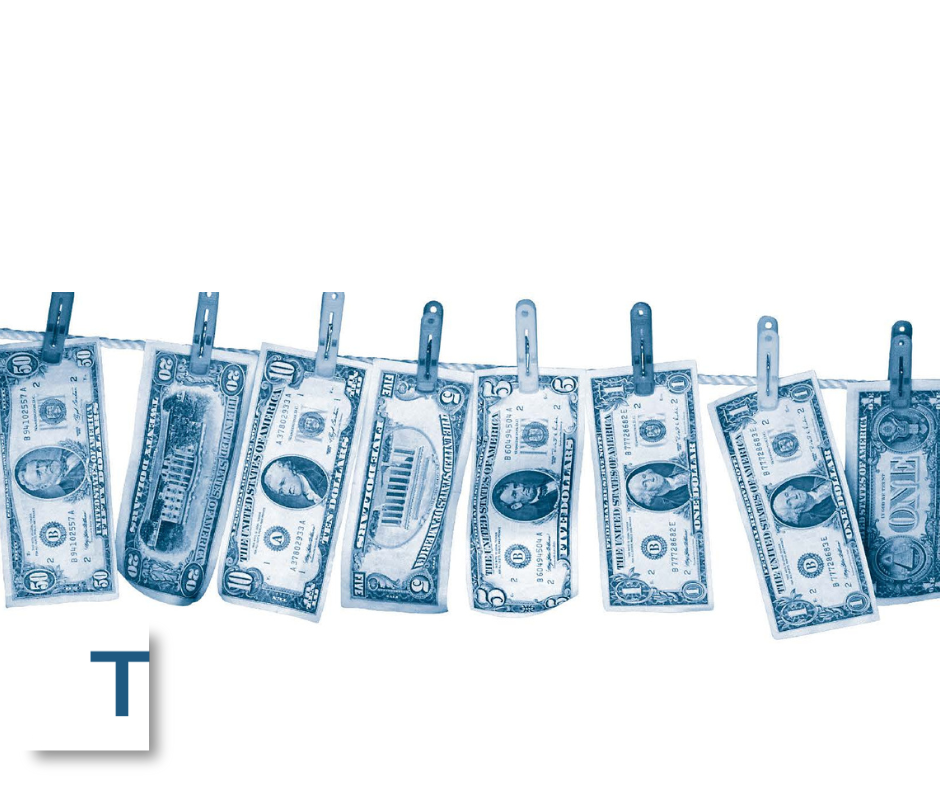Originally published in Trojan Today, October 2009.
ACT: Ten years ago, 35% of dental practice owners said they were victims of employee embezzlement. Today the percentage is nearly 70%.
Most dental practices are small, but still the opportunities to take advantage of the employer are many. Embezzling is not always about stealing money, although that’s certainly one form. Embezzlement can also be falsification of time records, stealing practice supplies, fraudulent use of prescription pads, using practice property for personal gain, etc.
Think about it. During the course of your day, you are so busy providing dental care you don’t have time to oversee the front desk or office manager’s tasks. It may take time before you realize anyone on your staff is taking advantage of you and the business.
Furthermore, most dentists naturally want to focus on doing dentistry and tend to rely heavily on others to do the tasks of managing the various business aspects. Putting that amount of responsibility on people without the proper follow-up and oversight can lead to trouble if the wrong person has been hired.
Full participation in your business is a must; the risk is too high otherwise. This article, which examines the various aspects of embezzlement and how you can prevent it, can be used as a springboard.
Who embezzles?
No one is immune to this behavior. In a recent survey conducted by Susan Gunn Solutions, dentists have been embezzled by assistants, front office personnel, office managers, spouses, other family members, CPA’s, associates, even practice owners themselves. It is difficult to pinpoint one particular position or person who is regularly the perpetrator.
Embezzler warning signs
While there is no “one size fits all” to the symptoms an employee displays, most employees who embezzle will exhibit one or more of the following warning signs. The employee:
- Changes standard of living to a degree that is inexplicable
- Works late and on weekends and refuses to take vacations
- Requests to borrow money from others frequently, rarely repays loans
- Has wage garnishments; receives telephone calls from creditors
- Asks for frequent pay advances
- Goes out of the way to work overtime, without reason
- Gambles or makes excessive references to gambling
- Makes references to significant domestic problems; receives telephone calls at work from family members regarding domestic problems; or demonstrates evidence of physical, mental, or emotional abuse and signals of distress
- Demonstrates signs of drug and alcohol abuse and/or overuse of prescription medication
In a report from Susan Gunn regarding her survey results, she states: “Another interesting note was how often the embezzlers stirred dissention in the office: bad-mouthing the dentist for low wages or bonuses, or bad-mouthing other staff as incompetent. Be wary of staff that stir up bad feelings or negativity in the practice, or routinely complain about their co-workers.”
None of the above behaviors are absolutely indicative of embezzlement. These are just some of the apparent clues that the doctor and staff may witness, which may mean an intervention should occur.
Detecting embezzlement
In addition to noticing symptoms of the employee who may be an embezzler, there are generally other signs that something is amiss. If you begin to notice any of the following, you may want to begin an investigation. Signs include:
- Disorganized and/or missing records
- Delayed bank deposits
- Unusual/large drop in revenue or profits
- Customer complaints about double billing
- Disappearance of petty cash
- Accounts payable and receivable don’t balance
- Numerous outstanding checks or bills
- Duplicate payments are made
- Significant write-offs or adjustments to accounts
- Unexplained changes and/or holes in accounting records
- Unusually large or a significant jump in business with one particular customer
- Altered check amounts
Investigating embezzlement
It’s unlikely you will catch the thieving employee red-handed. Typically, suspected embezzlement is detected based on circumstantial evidence, such as another employee’s report or through an audit. Therefore, it is imperative that an investigation be conducted quickly and subtly. Before beginning the investigation, gather as much data supporting your suspicions as possible. Consider contacting your practice accountant for assistance.
Start by completing a list of employees who could or would have had the opportunity to commit the theft, as well as employees who may have known about the suspected embezzlement but did not report it. Regardless of stature within the company, length of service, or job record, all employees who had the opportunity to commit the act should be investigated.
For complex situations or a theft resulting in a particularly large loss, it may be advisable for you to contact professional sources for assistance; for example, obtain legal counsel, call the police, contact computer data retrieval specialists, and notify your practice liability insurance carrier.
Some employers decide to install surveillance cameras in an effort to catch the thief in the act. This may or may not be an effective choice depending on how the theft is occurring. If you decide to do this, check with local authorities on legally implementing this type of system. Employees have certain rights, such as privacy, that would preclude you from installing the camera in a place where this right would be invaded. In addition, employers must have permission before any voices can be recorded.
As the investigation ensues, interviewing all employees becomes essential. During this process, it is crucial the employer maintain regard for confidentiality and not coerce or cause undue duress. Check with local police departments for advice on how to perform interviews appropriately to ensure the information can be used later in a court of law. Document all interviews in detail, and obtain written statements when possible. Ideally, perform the interviews and collect the written statements with a neutral third-party person present. Follow-up with certain employees may be necessary.
The responsible employee may confess to the wrongdoings when enough physical evidence and written statements relating to the loss can be shown.
Disciplinary action/recouping the loss
Since embezzlers tend to believe they can get away with it again, their future behavior may be suspect, which may result in the employer feeling that termination is the only alternative. Employers must refrain from making any promises or threats to the guilty employee. Furthermore, “deals,” such as agreeing to abstain from filing civil or criminal charges in return for restitution, should never be made.
Consideration of the pros and cons for all avenues of getting back your losses must be done. Similarly, not taking action must be weighed in terms of the message that is conveyed to your employees.
Prevention
Susan Gunn’s survey notes the lack of background or reference checks being conducted by the majority of responders. Practice owners continue to “trust their instinct” when hiring staff, which couldn’t be more irresponsible.
Background checks can include criminal and civil reports, driving records, social security trace/verification, credit reports, education and professional license verification, and workers’ compensation inquiries (some states excluded). Reference checks confirm an applicant’s employment dates, job title, last salary, and job performance with a previous employer.
Thus, conducting both background and reference checks can help reduce a myriad of potential problems associated with performance in addition to embezzlement. Often, just the knowledge that these checks may be performed discourages applicants with a questionable background from applying.
In addition:
- Protect cash; don’t leave it lying around unsecured; count petty cash each night to ensure there are no shortages.
- Avoid using signature stamps for checks.
- Bond employees responsible for financial aspects of the business.
- Manage accounts payable yourself or hire a professional bookkeeper.
- Secure blank checks and deposit slips.
- Restrict/minimize the number of employees who have signature authority on your bank account.
- Reduce excess funds being left onsite by making deposits nightly.
- Review and compare the day sheet, appointment book, and deposit; check for adjustments and investigate the reason for the adjustment if it is not apparent.
In short, keep yourself abreast of your own practice’s financial picture. The biggest deterrent to embezzlement or theft is staff’s knowledge that you are on top of your finances daily. Develop strict procedures for handling transactions and establish a system of checks and balances at every stage.
Conclusion
Embezzlement CAN happen to you; denying this reality may haunt you in the future. Instead, learn how to be more proactive rather than reactive and instill safety precautions. Although no safeguard you choose will protect your business 100 percent of the time, that’s no reason to avoid implementing processes that will minimize your risk and protect your financial future.
FMI: You can contact Tim Twigg or Rebecca Boartfield at www.bentericksend.com
Read More from Bent Ericksen experts:
Trojan Today | Now Arriving: “Uber-like” Staffing Options
Trojan Today | Rebecca Boartfield | Onboarding & Engaging Employees
Trojan Today | The End of the Dreaded Yearly Performance Review
Trojan Today | The End of the Dreaded Yearly Performance Review Pt 2
Trojan Today | End of the Dreaded Yearly Performance Review Pt 3

